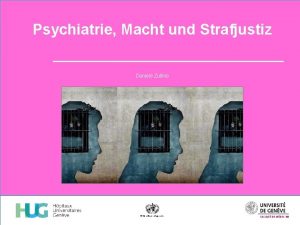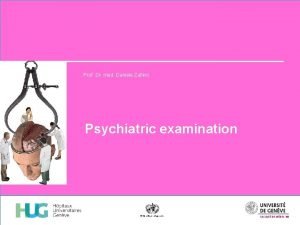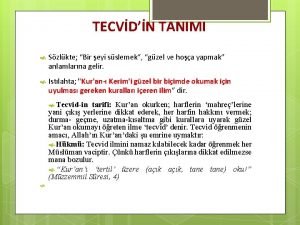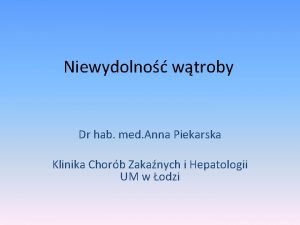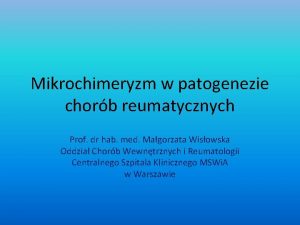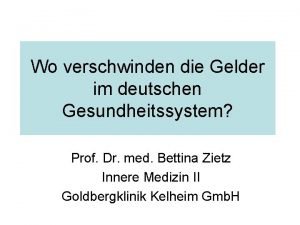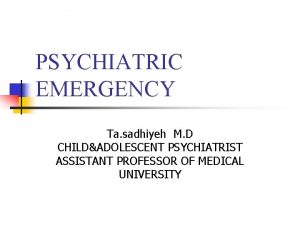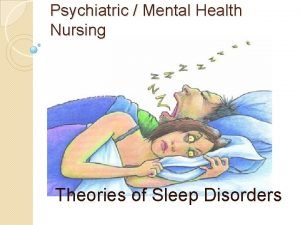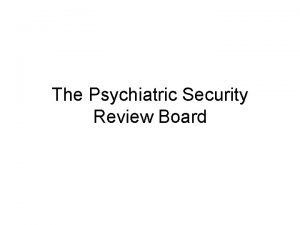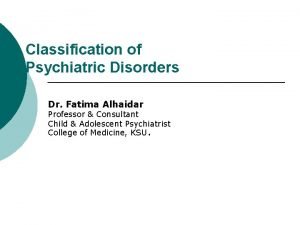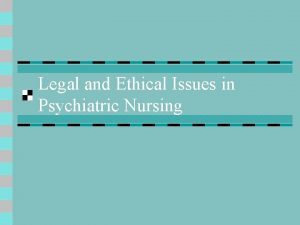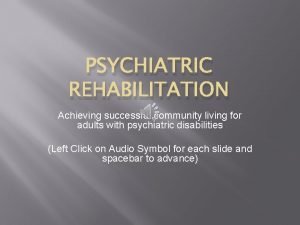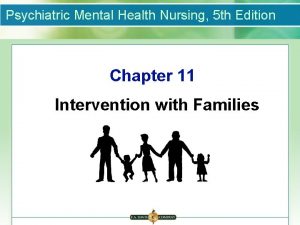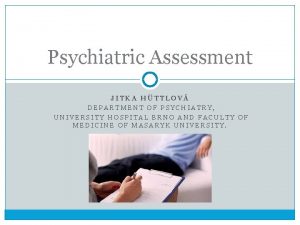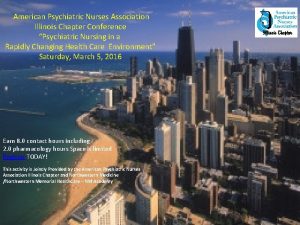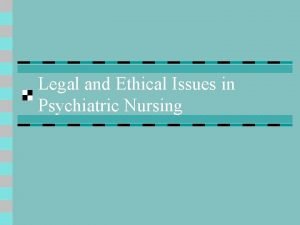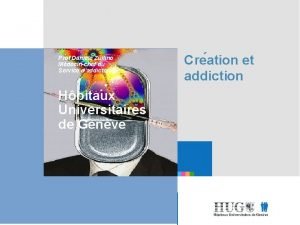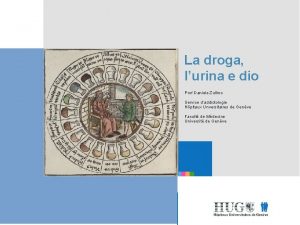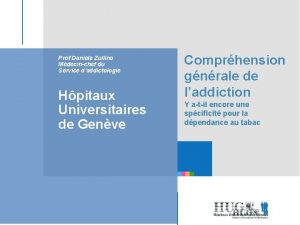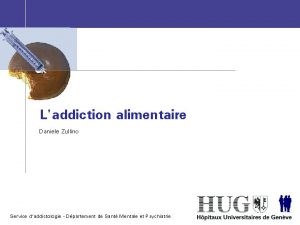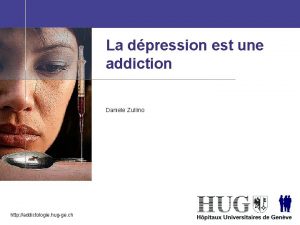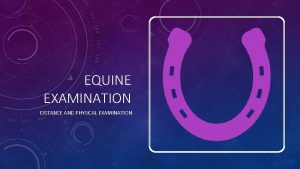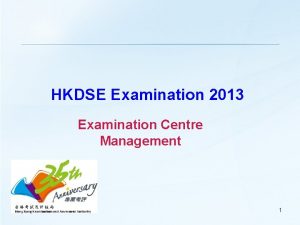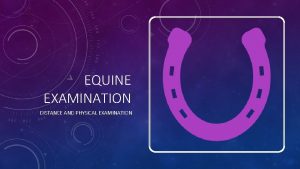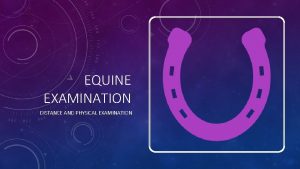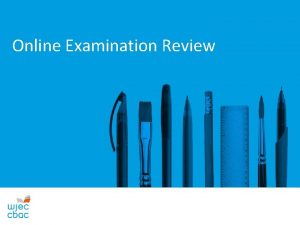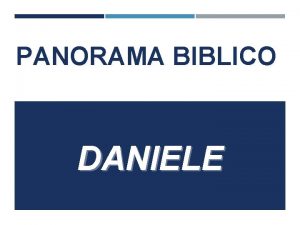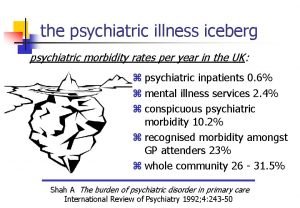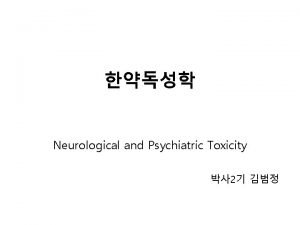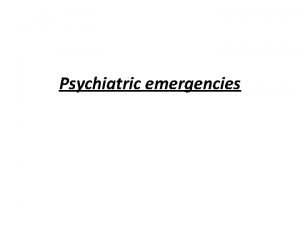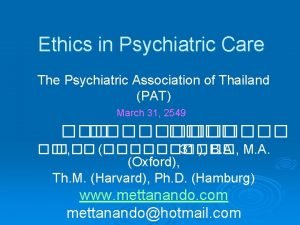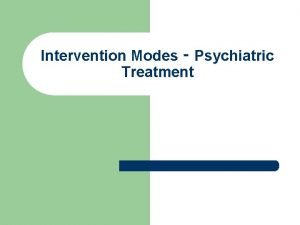Prof Dr med Daniele Zullino Psychiatric examination WHO

























- Slides: 25

Prof. Dr. med. Daniele Zullino Psychiatric examination WHO collaborating center

Medical semiology The science of signs, which indicate a lesion or a dysfunction Signs Symptoms Examine, observe Ask, listen

Specificities of psychiatric semiology • Subjective nature • Inter-personal nature

Subjective nature • Examination concerns mainly speech, verbal productions, communication • Symptoms mainly qualitative • Based on phenomenology (= psychological study of subjective experience) • Almost no para-clinical examinations

Inter-personal nature • Takes into account relationship and interactions • Subjectivity and intersubjectivity • Sensitivity for contact, presentation, habitus, communication, social context etc. • Mandatory personal engagement of the psychiatrist (his phenomenology !) • Psychiatric medicine sometimes more relationship’s medicine than symptom’s medicine

Mental status examination General appearance Psychomotricity Consciousness Attention Memory Ego Thoughts Orientation Affects Perception

Consciousness Lowered vigilance Clouded consciousness Narrowed consciousness Expanded consciousness ⁃ Qualitative attainment ofclarity of consciousness ⁃ Loss of the ability to understand different aspects of oneself / the world ⁃ and to connect them sensibly ⁃ Focus of thoughts, perception and will on a reduced number of themes ⁃ ↓ response to stimuli ⁃ Subject seems fixed or fascinated ⁃ ↑ Vigilance ⁃ Intensification perceptions

Time Orientation Self Space Situation

Attention • • applying the mind to something focusing of consciousness and receptivity Concentration • Capacity to maintain the attention toward something

Apperception Memorisation Ability to understand perceptions regarding their meaning and to make connections between perceptions Ability to retain new information for a period of about 10 minutes Test : proverbs, fables Eg. The grass is always greener on the other side of the fence Test : 3 objects Retention Ability to record long-term impressions or experiences (duration> 10 min), or to remember what has been learned

Confabulation • Memory gaps are replaced by intuitions which the subject holds for own memories • E. g. : In response to repetitive questions, the patient delivers a new version each time What did you do yesterday at 3 pm? I visited my mother What did you do yesterday at 3 pm? I went swimming What did you do yesterday at 3 pm? I went shopping

Retarded thinking Inhibited thinking Latency of responses Perceived as braked or blocked thought and slow speech (as if it were hindered)

Digressive thinking Circumstantial thinking • • • Does not distinguish the essentials from the accessory Subject gets lost in useless details May result from weak sense of abstraction or inability to overlook details • • • Inability to stick to a logical train of thought Disturbance in the associative thought process Drifts away

Flight of ideas • Permanent change of direction of thought (intercurrent associations) • Not necessarily acceleration

Rumination • • Unceasing concerns, revolving around the same themes Egosyntonic Obsessions • • Continual thought, experienced as invasive and not proper Experienced as absurd (egodystonic)

Compulsions • Behavior • Accomplished under the force of a haunting inner constraint • Done against the internal resistance of the subject • Although considered absurd, cannot or hardly be prevented

Verbal perseveration • Repetition of previously used words or phrases that no longer make sense in the current context What did you eat at noon? A pizza quattro stagioni Did you eat it in a restaurant? A pizza quattro stagioni Qui était avec vous? A pizza quattro stagioni

Incoherence • • Disturbed logical construction of thoughts Thoughts / language lose (for the examiner) logical consistency Blocking • • Abrupt suspension of thought or locution that was fluid until then Patient can resume his locution on the same or on a different theme

Delusions • Persistent false belief that is maintained with strong conviction despite evidence to the contrary • Criteria: certainty and incorrigibility

Hallucinations • perceptions in the absence of external stimulus • Have qualities of real perceptions • Can occur in any sensory modality

Hallucinations Disorder of perceptions Delusions Disorder of thought

Thought withdrawal Thought insertion One's thoughts are being taken out Thoughts perceived as influenced, of from one's mind by other fabricated, directed from the outside

Affective lability Affective incontinence Fast emotional changes Sudden emergence, as a result of a weak stimulus, of uncontrollable affective reactions

Asthenia Anhedonia Feeling tired, physically exhausted Subject no longer derives Pre-exists the effort pleasure from the things of life

http: //addictohug. ch/ https: //www. facebook. com/addictologie. HUG/ https: //twitter. com/addictologiehug https: //www. linkedin. com/company/service-d'addictologie https: //www. youtube. com/channel/UCVh. K 2 Zm. Xq. Sq. Wq. R 3 rtg. GHvp. A/videos http: //www. hug-ge. ch/addictologie
 Natascia zullino
Natascia zullino Ego syntonic
Ego syntonic Sekte olan sureler
Sekte olan sureler Kryteria king's college
Kryteria king's college Mikrochimeryzm plodowo matczyny
Mikrochimeryzm plodowo matczyny Prof. dr. med. bettina zietz
Prof. dr. med. bettina zietz Prof. dr hab. n. med. anna piekarska
Prof. dr hab. n. med. anna piekarska Psychiatric emergencies
Psychiatric emergencies American psychiatric association annual meeting 2020
American psychiatric association annual meeting 2020 Development of modern psychiatric nursing
Development of modern psychiatric nursing Psychiatric nursing theories
Psychiatric nursing theories Psychiatric security review board
Psychiatric security review board Chapter 22 psychiatric emergencies
Chapter 22 psychiatric emergencies Psychiatric emergency
Psychiatric emergency Definition of psychiatric nursing
Definition of psychiatric nursing Nefsh
Nefsh Psychiatric disorders
Psychiatric disorders Legal issues in psychiatric nursing
Legal issues in psychiatric nursing Psychiatric rehabilitation
Psychiatric rehabilitation Chapter 11 psychiatric mental health nursin
Chapter 11 psychiatric mental health nursin Mse assessment
Mse assessment Psychiatric services liberty hill
Psychiatric services liberty hill Cmc psychiatric hospital
Cmc psychiatric hospital Nursing process in psychiatric nursing
Nursing process in psychiatric nursing American nurses association illinois
American nurses association illinois Defense mechanisms nursing
Defense mechanisms nursing
